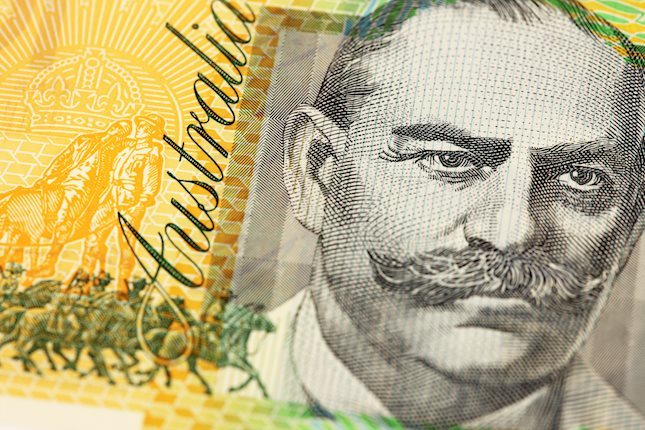- Pound Sterling faces selling pressure as investors’ risk appetite diminishes.
- BoE Pill cautioned about an excessive economic slowdown due to the restrictive policy stance.
- Israel rejected a ceasefire offer but is open to fighting pauses for aid.
The Pound Sterling (GBP) faces a sell-off on Tuesday, paring some gains from the recent rally, as risks of a slowdown in the United Kingdom economy are unabated due to higher interest rates by the Bank of England (BoE). The GBP/USD pair recovered sharply on Friday and Monday but struggled to maintain strength and trades around 1.2330 amid an absence of fundamental cushion for the Pound Sterling.
The recent recovery in the Cable was backed by an improvement in the market sentiment due to expectations of no more interest rate hikes from the Federal Reserve (Fed) and no further escalation in Middle East tensions. However, risks of the UK economy entering into a recession are high as sectors including manufacturing, services, and housing are struggling to absorb the effect of higher interest rates by the BoE. Already weak British consumer spending is expected to worsen further as individuals face an escalating cost of living crisis.
Daily Digest Market Movers: Pound Sterling slumps on dismal market mood
- Pound Sterling dropped to near 1.2330 after facing a sell-off above the round-level resistance of 1.2400 as the risk appetite of the market participants diminished.
- The GBP/USD pair corrects as investors see upside risks of the UK economy entering into a recession due to a historically tight monetary policy by the Bank of England (BoE).
- Weak consumer spending due to higher cost of living has deteriorated the demand outlook. This has led to a slowdown in hiring, scale of production, and business investment.
- A survey from Accenture and YouGov indicated that two-thirds of UK adults are not interested in participating in Black Friday, Cyber Monday, or Boxing Day discounts due to the deepening cost of living crisis.
- S&P Global, in its October report, showed that PMIs in all sectors such as manufacturing, services, and construction remained below the 50.0 threshold. The Construction PMI, released on Monday, improved to 45.6 expectations of 44.5 and the former reading of 45.0 but remained below the 50.0 threshold.
- Construction spending has come down significantly as home-buyers have postponed their plans of investment in the housing sector to avoid higher borrowing costs.
- BoE's Chief Economist Huw Pill said Monday that upside risks to an excessive slowdown are high as the central bank is committed to bringing down inflation to 2% by keeping monetary policy restrictive sufficiently longer.
- Pill added that the central bank is aware of the consequences of economic slowdown on people with lower incomes in the fight against stubborn inflation.
- In its latest forecasts, the BoE conveyed that the economy will flatline in the next two years and the growth rate in 2026 would be less than 1%.
- While discussing rate cuts, Pill said that rate cuts before mid-2024 seem totally unreasonable as inflation is still more than thrice the desired rate of 2%.
- This week, investors will keenly focus on the Q3 GDP data, which will show the repercussions of tight monetary policy. According to the preliminary estimates, the UK economy is expected to contract by 0.1%, against 0.2% growth in the April-June quarter.
- Meanwhile, geopolitical tensions keep the market mood at bay. Israeli Prime Minister Benjamin Netanyahu said that his administration is open to little pause to the ground invasion in Gaza but not to a general ceasefire.
- The US Dollar, when tracked by the US Dollar Index, found an intermediate support near 105.00 but the near-term demand seems weak as investors hope that the historically tight rate-hiking campaign by the Federal Reserve (Fed) has concluded.
- Minneapolis Fed Bank President Neel Kashkari said Monday that the US economy has proved to be resilient despite elevated interest rates but the central bank has a lot of work ahead to tame consumer inflation.
Technical Analysis: Pound Sterling discovers intermediate support near 1.2300
Pound Sterling extends its correction to near 1.2300 after facing selling pressure above the crucial resistance of 1.2400. The 200-day Exponential Moving Average (EMA) around 1.2400 has been acting as a critical barrier for the Pound Sterling bulls. The Cable is gradually declining after a breakout of the symmetrical triangle chart pattern formed on a daily time frame, which is a general course of action.
Fresh buying in the GBP/USD pair could appear after completing the correction to near the 50-day or 20-day EMAs.
BoE FAQs
What does the Bank of England do and how does it impact the Pound?
The Bank of England (BoE) decides monetary policy for the United Kingdom. Its primary goal is to achieve ‘price stability’, or a steady inflation rate of 2%. Its tool for achieving this is via the adjustment of base lending rates. The BoE sets the rate at which it lends to commercial banks and banks lend to each other, determining the level of interest rates in the economy overall. This also impacts the value of the Pound Sterling (GBP).
How does the Bank of England’s monetary policy influence Sterling?
When inflation is above the Bank of England’s target it responds by raising interest rates, making it more expensive for people and businesses to access credit. This is positive for the Pound Sterling because higher interest rates make the UK a more attractive place for global investors to park their money. When inflation falls below target, it is a sign economic growth is slowing, and the BoE will consider lowering interest rates to cheapen credit in the hope businesses will borrow to invest in growth-generating projects – a negative for the Pound Sterling.
What is Quantitative Easing (QE) and how does it affect the Pound?
In extreme situations, the Bank of England can enact a policy called Quantitative Easing (QE). QE is the process by which the BoE substantially increases the flow of credit in a stuck financial system. QE is a last resort policy when lowering interest rates will not achieve the necessary result. The process of QE involves the BoE printing money to buy assets – usually government or AAA-rated corporate bonds – from banks and other financial institutions. QE usually results in a weaker Pound Sterling.
What is Quantitative tightening (QT) and how does it affect the Pound Sterling?
Quantitative tightening (QT) is the reverse of QE, enacted when the economy is strengthening and inflation starts rising. Whilst in QE the Bank of England (BoE) purchases government and corporate bonds from financial institutions to encourage them to lend; in QT, the BoE stops buying more bonds, and stops reinvesting the principal maturing on the bonds it already holds. It is usually positive for the Pound Sterling.
Information on these pages contains forward-looking statements that involve risks and uncertainties. Markets and instruments profiled on this page are for informational purposes only and should not in any way come across as a recommendation to buy or sell in these assets. You should do your own thorough research before making any investment decisions. FXStreet does not in any way guarantee that this information is free from mistakes, errors, or material misstatements. It also does not guarantee that this information is of a timely nature. Investing in Open Markets involves a great deal of risk, including the loss of all or a portion of your investment, as well as emotional distress. All risks, losses and costs associated with investing, including total loss of principal, are your responsibility. The views and opinions expressed in this article are those of the authors and do not necessarily reflect the official policy or position of FXStreet nor its advertisers. The author will not be held responsible for information that is found at the end of links posted on this page.
If not otherwise explicitly mentioned in the body of the article, at the time of writing, the author has no position in any stock mentioned in this article and no business relationship with any company mentioned. The author has not received compensation for writing this article, other than from FXStreet.
FXStreet and the author do not provide personalized recommendations. The author makes no representations as to the accuracy, completeness, or suitability of this information. FXStreet and the author will not be liable for any errors, omissions or any losses, injuries or damages arising from this information and its display or use. Errors and omissions excepted.
The author and FXStreet are not registered investment advisors and nothing in this article is intended to be investment advice.
Recommended content
Editors’ Picks

AUD/USD holds solid-Aussie jobs data-led gains above 0.6400
AUD/USD holds sizeable gains above 0.6400 early Thursday, capitalizing on stellar Australian jobs data, which pointed to a still resilient labour market and forced investors to scale back their bets for a rate cut by the RBA in February.

USD/JPY extends losses to near 152.00 amid risk-aversion, US Dollar retreat
USD/JPY drifts lower to near 152.00 in Thursday's Asian trading, snapping a three-day winning streak to a two-week high.The pair remains weighed down by a broad US Dollar pullback, risk-aversion and uncertainty around the BoJ rate hike next week. Focus shifts to US data.

Gold buyers take a breather ahead of US PPI inflation data
Gold's price seems to have paused its four-day recovery stint in Asian trading on Thursday after hitting fresh five-week highs near $2,725. Traders assess the odds of US Federal Reserve (Fed) interest rate cuts next year amid the ongoing upsurge in the US Treasury bond yields across curve.

Ripple's XRP could extend its rally to $4.75 after recent consolidation, rising profit-taking poses threat
Ripple's XRP continued its rally on Wednesday as it looks to test the upper boundary of a key flag channel. Following the recent price rise, investors booked profits worth nearly $800 million while options traders bet on the remittance-based token hitting the $5 mark.

BTC faces setback from Microsoft’s rejection
Bitcoin price hovers around $98,400 on Wednesday after declining 4.47% since Monday. Microsoft shareholders rejected the proposal to add Bitcoin to the company’s balance sheet on Tuesday.

Best Forex Brokers with Low Spreads
VERIFIED Low spreads are crucial for reducing trading costs. Explore top Forex brokers offering competitive spreads and high leverage. Compare options for EUR/USD, GBP/USD, USD/JPY, and Gold.